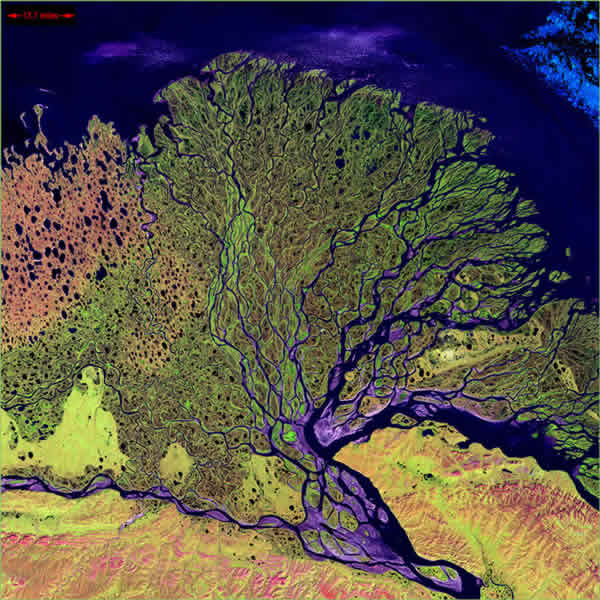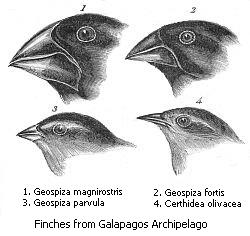Earth's Systems
Most people have heard of the water cycle and can name a few factors of it. In that way it is simple. It does have more complexity to it as well. It includes evaporation, transpiration, condensation, precipitation, infiltration, surface runoff, groundwater, and absorption. The water that is one earth today, has been on the earth since its beginning. It goes through a continuous system, traveling around the world, but staying within the atmosphere in all of its forms.
"The first step of the water cycle is evaporation. About 85% of the water vapor in the air comes from water that evaporated from the oceans. The other 15% comes from evapotranspiration, which is a catch-all term for water that evaporates from over land. This includes water vapor produced by plants during transpiration, water from lakes, streams, puddles and soil moisture, direct evaporation of snow and even water vapor from the breath of animals." After that comes condensation. The water vapor in the air condenses into water droplets that form clouds, which either dissipate back into vapor, or go onto precipitation. Precipitation is where the water falls to the earth in frozen or liquid form. This water is then used by plants, animals, and humans. It can also be absorbed into the ground for plants and trees (absorption/infiltration), become surface runoff, become a part of a watershed.
"Rain is necessary for the survival of plants and humans. Condensation is necessary for cloud formation. Evaporation is necessary to cooling and keeping a good balance of water vapor in the air."
A watershed is all the elements that flow into a common water body. The term watershed can usually be divided into two groups, groundwatershed and surface watershed. Surface watersheds include lakes, streams, rivers, and wetlands. And surprise, surprise, groundwater goes with groundwatershed. "In every watershed, small streams flow into larger streams, which flow into rivers, lakes, and bays. The smallest streams at the outer limits of a watershed are called headwaters. In New England, headwaters are often located in the mountains. These headwater streams have no tributaries and are called first order streams. All other streams have tributaries. Second order streams form when first order streams meet. Third order streams form when second order streams meet, and so on." The watersheds are often separated by land forms such as mountains.
Streams are also grouped into complex categories. Perennial (year-round) streams are flowing year round with a good supply of precipitation. seasonal and rain-dependent streams flow when it rains or during times of the year that surface water melts or is more prolific.
As rivers flow, the cut in across the earth, eroding the earth around them, picking up dirt along the way, and bringing it downstream: "all of the rocks, pebbles and soil that rivers churn up get carried downstream. As the river flows, it deposits all of the stuff it carries. Large items like rocks get deposited first. Soil is deposited last. Over time the soil that a river deposits can build up and create new land areas!" Flooding and forming in new areas sometimes due to an increase in precipitation or outside influence from humans, such as dams. Flooding can harm an ecosystem by changing a forest into a wetland or demolishing the homes of citizens that live near flooding rivers and natural flood zones.
Natural Selection
When I was 14, my family and I went on a camping trip to the Everglades National Park. While we were there, we went to a seminar about adaptation that was put on by a ranger at an outside amphitheater. One of the first things we talked about was how we define adaptation. The audience was challenged to define the word without using it in the definition. Many people used it anyways, not able to define adaptation without using "adapt." A good definition I found online is: "any alteration in the structure or function of an organism or any of its parts that results from natural selection and by which the organism becomes better fitted to survive and multiply in its environment." Environmental factors, along with isolation and adaptation can lead to many outcomes of a population or species.
As Charles Darwin has said, "environmental conditions determine the reproductive success of certain individuals because they possess a trait that allows them an advantage in that environment." Birds beaks can be tracked from one form of a species to another, with certain forms excelling in survival because of their different beak, increasing the number of that species over the opposing species. If a chameleon has a mutated gene that allow it to blend with the green leaves of the tree that grows the most in its environment, it is most likely to thrive in that particular area as opposed to the chameleons that stand out from the tree. In this way, over time, adaptation and natural selection will cause a new species of chameleon to emerge.
H. B. D. Kettlewell conducted a similar experiment to my chameleon theory. Kettlewell put moths into a light forest and some into a soot-covered forest. After a certain amount of time he found how many light or dark moths were alive in the contrasting forest environments. "In the soot-covered dark forest, he recaptured mostly dark moths; in the lighter forest, mostly light moths." This was due to the birds finding and eating the moths that stuck out in the environment, leaving the ones that were best suited to it. In this way some species become extinct because of natural selection.
H. B. D. Kettlewell conducted a similar experiment to my chameleon theory. Kettlewell put moths into a light forest and some into a soot-covered forest. After a certain amount of time he found how many light or dark moths were alive in the contrasting forest environments. "In the soot-covered dark forest, he recaptured mostly dark moths; in the lighter forest, mostly light moths." This was due to the birds finding and eating the moths that stuck out in the environment, leaving the ones that were best suited to it. In this way some species become extinct because of natural selection.
"Streams." Home. N.p., n.d. Web. 16 June 2014.
<http://water.epa.gov/type/rsl/streams.cfm>
"The Water Cycle | Climate Education Modules for K-12." The Water Cycle | Climate Education Modules for K-12. N.p., n.d. Web. 16 June 2014. <https://www.nc-climate.ncsu.edu/edu/k12/.watercycle>.
<http://water.epa.gov/type/rsl/streams.cfm>
"The Water Cycle | Climate Education Modules for K-12." The Water Cycle | Climate Education Modules for K-12. N.p., n.d. Web. 16 June 2014. <https://www.nc-climate.ncsu.edu/edu/k12/.watercycle>.
"Natural Selection." Infoplease. Infoplease, n.d. Web. 15 June 2014. <http://www.infoplease.com/cig/biology/natural-selection.html>.
Read more: Genetic Variation and Natural Selection: Natural Selection | Infoplease.com http://www.infoplease.com/cig/biology/natural-selection.html#ixzz34oiALNSb
"Adaptation." Dictionary.com. Dictionary.com, n.d. Web. 16 June 2014. <http://dictionary.reference.com/browse/adaptation>.




.jpg)

